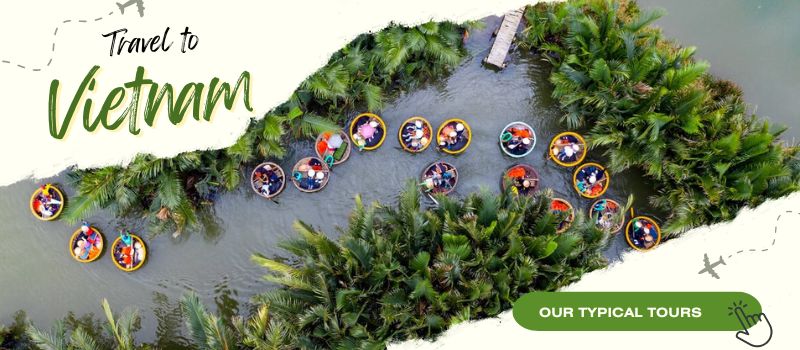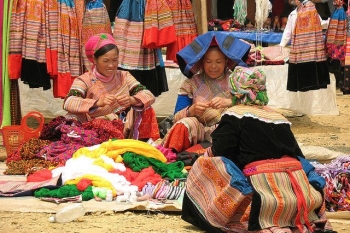Discover Authentic Vietnamese Cuisine with a Local Guide
Vietnam invites you to a feast of flavors! Travel through its regions to savor unique dishes, each telling a story influenced by local ingredients and ancient traditions.
Born in Vietnam, I've grown up savoring the culinary delights of each region of my country. Vietnamese cuisine is more than just food; it’s a deep dive into our culture and history. Let me guide you through the unique flavors of the North, Central, and South regions, sharing my favorite spots cherished by locals for an unforgettable and authentic experience.
1. The Art of Vietnamese Cuisine
In Vietnam, cooking is an art passed down through generations. Rice, a staple, symbolizes our rich culinary culture, prepared in countless varieties and methods. Vietnamese cuisine balances flavors inspired by yin and yang principles and the harmony of the five elements. Fresh, natural spices delicately flavor dishes without overpowering them. Fermented fish sauce, or nuoc mam, adds a unique umami depth to many preparations.
Vietnamese prefer gentle cooking methods, like steaming or boiling, to preserve the freshness and natural flavors of the ingredients. Crunchy vegetables, aromatic herbs, and tender meats combine beautifully in light, balanced dishes.
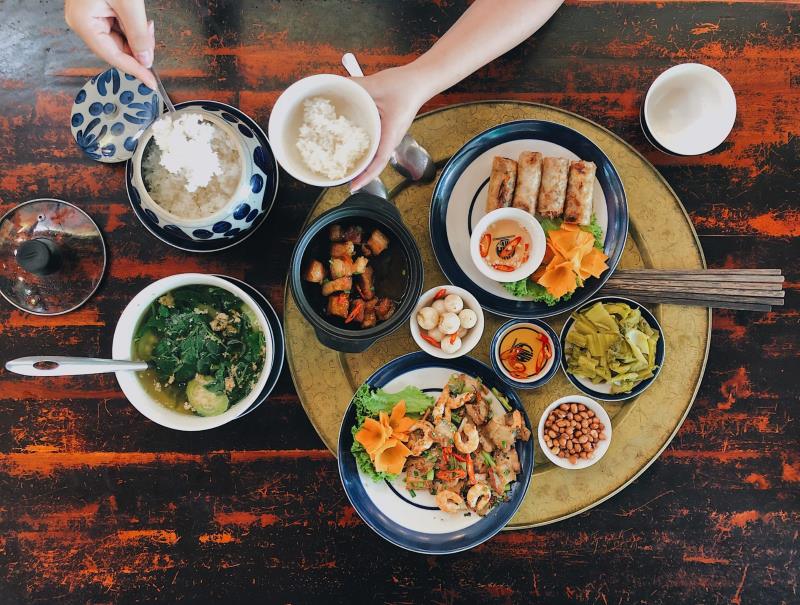
2. Tips from a Francophone Guide for a Successful Culinary Immersion in Vietnam
To truly enjoy Vietnamese cuisine, it’s not enough to taste the iconic dishes; immerse yourself in the local culinary culture, understand the subtle flavors, and discover the best spots with the help of an experienced and passionate francophone guide.
Where to Eat and What to Know
- Local Markets: These street food havens offer a burst of colors, scents, and flavors. Follow your nose and curiosity, and don’t hesitate to ask your guide for recommendations.
- Street Food Stalls: These modest places often serve the most authentic and delicious dishes. Your guide will find the best spots, far from tourist trails.
| Tip: In local markets and street stalls, cash (Vietnamese dong - VND) is usually the only accepted payment. Learn more about Vietnamese currency and prepare for transactions here: Vietnamese Currency, Tipping & Bargaining: A Complete Guide |
- Family Restaurants: For a more intimate experience, share a meal with a Vietnamese family to discover culinary traditions passed down through generations.
- Cooking Classes at Locals’ Homes: Learn to prepare your favorite Vietnamese dishes under the guidance of a passionate local chef for a unique and enriching experience.
| Tip: Start with restaurants to familiarize yourself with local cuisine. Market stalls and street food offer a more immersive experience but can be overwhelming for unaccustomed stomachs. |
What to Eat?
Regional Must-Try Dishes
Each Vietnamese region has its specialties. In Hanoi, try pho, a fragrant and comforting beef noodle soup. In Hue, savor bun bo Hue, a spicy beef noodle soup with complex flavors. In Saigon, don’t miss com tam, a dish of broken rice with grilled meat and a fried egg.
Banh Mi
This Vietnamese sandwich is a culinary institution. Made with a crispy baguette filled with meat, pâté, pickled vegetables, and fresh herbs, banh mi comes in many variations across the country. Try different versions to discover all the nuances of this popular dish.
Rice Dishes
Rice is a staple in Vietnam and comes in many delicious forms. Try sticky rice, fried rice, steamed rice, or coconut milk rice.
Soups
Vietnamese soups are light, fragrant, and nourishing. From pho to bun bo Hue, bun rieu, and lau, there’s something for everyone! Each soup has its unique ingredients and flavors, varying by region and season.
Nems (Spring Rolls)
These crispy rolls filled with meat, shrimp, or vegetables are a delight. They can be fried or fresh and are often enjoyed with a tangy nuoc cham sauce.
Salads
Vietnamese salads are fresh, crunchy, and flavorful. Try green papaya salad with peanuts and aromatic herbs, lotus salad with floral and crunchy notes, or green mango salad, which is tangy and refreshing.
Desserts
Vietnamese desserts often feature fresh fruits, sticky rice, or beans. Try che, a sweet dessert with coconut milk and fruits, or banh chuoi, a steamed banana cake that is soft and fragrant.
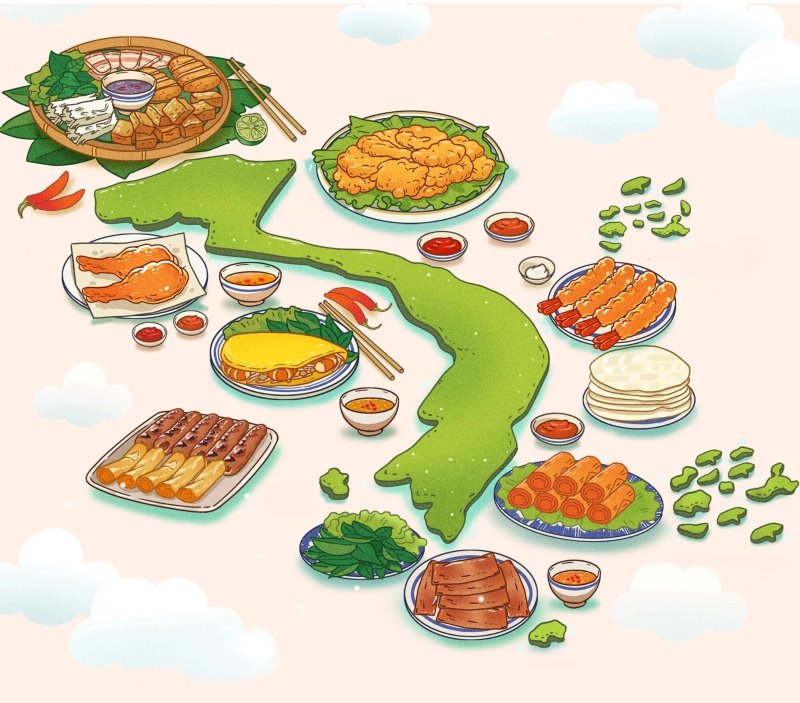
How to Eat?
- Chopsticks: Learning to eat with chopsticks is essential for immersing yourself in Vietnamese culture. Your guide can give you tips to master this skill.
- Sharing: In Vietnam, dishes are often shared among diners. Don’t hesitate to try everything and share your impressions with your table companions.
- Conviviality: Vietnamese meals are moments of sharing and conviviality. Use these times to exchange with your guide and fellow travelers.
Drinks to Discover
- Bia Hoi: This local draft beer is light and refreshing, perfect for accompanying meals.
- Ca Phe Sua Da: This iced coffee with condensed milk is a real pick-me-up, ideal for hot days.
- Fresh Fruit Juices: These juices are delicious and refreshing. Try sugarcane juice, passion fruit juice, or mango juice.
- Iced Tea: A popular drink in Vietnam, iced tea is often flavored with lemongrass, ginger, or jasmine.
3. My Culinary Favorites Across Vietnam: A Local Guide Shares Top Spots
As a passionate francophone guide, I’ve had the chance to taste many dishes across Vietnam. Allow me to share my favorites and reveal the must-visit spots for a true gastronomic adventure.
Note that many online articles recommend the same restaurants, often frequented by tourists or promoted through advertising. Here, I share my preferred addresses, recommended by locals for an authentic and flavorful experience, ideally located near the old quarter or city center for your convenience.
In the North: Subtle Flavors and Ancestral Traditions
Hanoi, Vietnam’s capital, is a paradise for food lovers. Here are my favorite spots for tasting the North’s iconic specialties:
Pho Bo and Pho Ga
Let the enchanting aromas of pho, the iconic beef or chicken noodle soup, tempt you. Each pho vendor has a secret recipe passed down through generations.
Good Addresses:
- Pho bo Lâm: 48 Hang Vai Street (5:30 AM to 9:30 AM)
- Pho bo 8 Hang Da: 8 Hang Da Street (6:00 AM to 11:00 AM and 4:30 PM to 10:00 PM)
- Pho ga Hong: 9 Ly Thai To Street (all day)
Places to Avoid:
- Pho bo 49 Bat Dan: Once renowned, this restaurant has become too touristy, and its pho quality has declined.
- Pho bo Ly Quoc Su: While the name remains famous, the quality is no longer up to par.
- Pho Thin Bo Ho: This restaurant’s reputation is no longer justified, with quality having dropped long ago.
- Pho Thin Lo Duc: This establishment, unrelated to Pho Thin Bo Ho, is more a product of advertising than an authentic address.
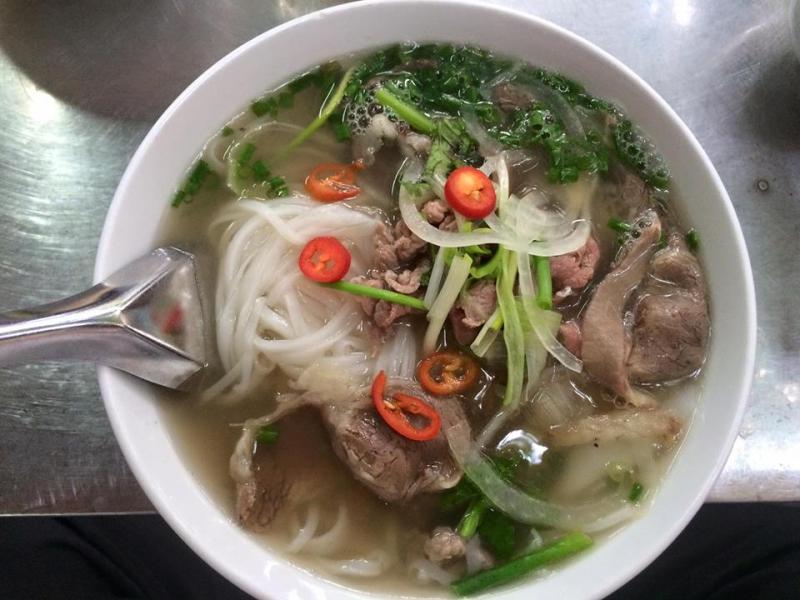
Bun Cha (Bún Chả)
A convivial dish iconic to Hanoi, consisting of rice vermicelli (bún), grilled pork patties, and caramelized pork belly slices, served with a spicy fish sauce and garnished with fresh mint, cilantro, shredded carrots, and sliced cabbage.
Good Addresses:
- Bun Cha Que Tre: 33 Hang Giay Street (10:00 AM to 9:00 PM)
- Bun Cha Hang Quat: 74 Hang Quat Street (10:00 AM to 2:00 PM)
Places to Avoid:
- Bun Cha Dac Kim: Once renowned, this restaurant has become too touristy, and its food quality is disappointing.
- Bun Cha Huong Lien: Famous mainly for Barack Obama’s visit, but the food quality doesn’t match the establishment’s renown.
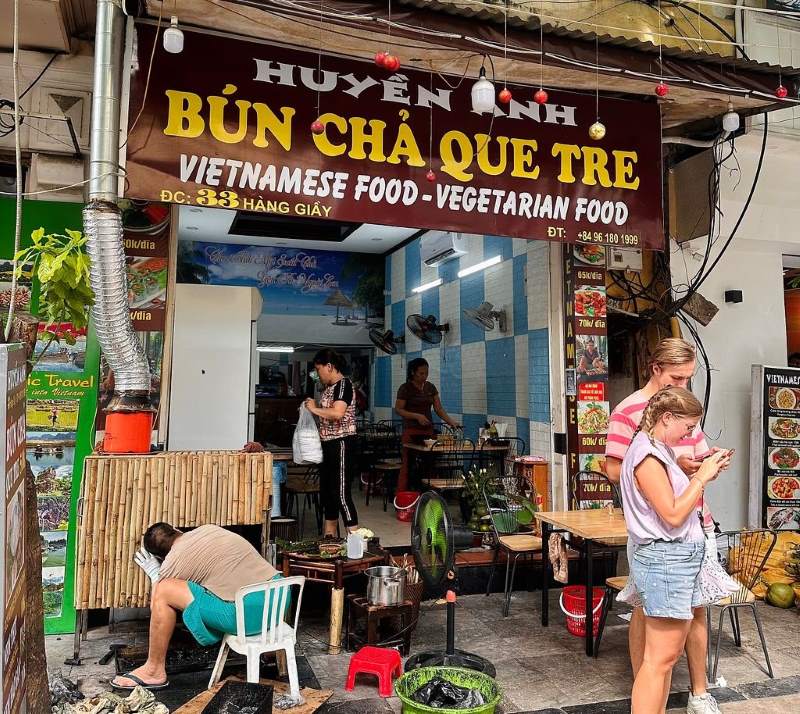
Banh Mi:
Good Addresses:
- Banh Mi 25: 25 Hang Ca Street
- Banh Mi Pho Hue: 118 Hue Street
- Banh Mi Thanh Thuy: 15 Hang Cot Street
If you venture into the northern mountainous regions, you’ll discover more rustic specialties like thang co, a hearty horse meat soup, or com lam, sticky rice cooked in bamboo tubes and scented with wild herbs.
In the Central Region: Imperial Cuisine and Maritime Influences
Hue, the ancient imperial city, will charm you with its refined cuisine and complex-flavored dishes. Be captivated by the aromas of bun bo Hue, a spicy beef noodle soup with lemongrass, shrimp paste, and pork pieces. Gourmets will also enjoy banh khoai, a crispy crepe filled with shrimp, pork, and bean sprouts, served with a tangy dipping sauce.
Bún Bò Huế O Xuân: Dong Ba Market
Hoi An, a charming UNESCO World Heritage port town, offers a unique cuisine influenced by Chinese and Japanese flavors. Don’t miss cao lau, a dish of thick noodles with pork, fresh herbs, and croutons, or mi quang, turmeric-yellow rice noodles served with a savory broth and various toppings.
Good Addresses:
- Cao Lau Khong Gian Xanh: 687 Hai Ba Trung, Hoi An
- Mi Quang 92: 112A Tran Cao Van, Hoi An
In the South: Explosion of Flavors and Dynamic Street Food
Saigon (Ho Chi Minh City), the bustling southern metropolis, is a paradise for street food lovers. Indulge in com tam (cơm tấm), a dish of broken rice with caramelized grilled pork, a fried egg, and pickled vegetables. Noodle soups like hu tieu, a pork or seafood soup, are also popular.
Good Addresses:
- Com Tam Chi Hong: 128 Doan Van Bo, District 4, HCM (7:00 PM to 3:00 AM)
- Hu Tieu Mi Thap Cam: 62 Truong Dinh, District 1, HCM
- Hu Tieu Mi Phat Ky: 176 Co Giang, District 1, HCM
Of course, no discussion of Vietnamese cuisine is complete without mentioning the legendary banh mi. This sandwich, a legacy of French colonial times, has become a national institution. Each region has its version, with varied fillings: grilled meat, pâté, eggs, pickled vegetables, fresh herbs... It’s a flavor festival in every bite!
Good Addresses:
- Banh Mi Hong Hoa: 54 Nguyen Van Trang, District 1, HCM
- Banh Mi Bay Ho: 19 Huynh Khuong Ninh, District 1, HCM
In the Mekong Delta, fish and seafood are the highlights. Try lau mam, a coconut milk fish hotpot scented with aromatic herbs, or bun ca, a fish noodle soup garnished with fresh vegetables and grilled peanuts.
Ready to indulge in Vietnam’s culinary delights? At Typic Travel, we’re passionate about Vietnamese cuisine and use our local expertise to provide you with an unforgettable culinary experience. Our custom gastronomic tours will take you through the country’s authentic flavors, from street food stalls to family restaurants, bustling local markets, and home cooking classes.
Our experienced francophone guides will share their knowledge and favorite spots, revealing the secrets of each dish and uncovering the hidden treasures of Vietnamese gastronomy. Don’t wait to book your culinary adventure in Vietnam with Typic Travel!
